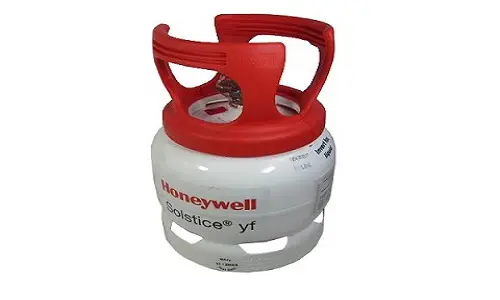By CRM Staff
Toronto, Ontario — August 31, 2018 — The R-1234yf refrigerant is becoming more common in the air conditioning systems of vehicles, which means more time and money for collision repairers and insurers.
Under an Environmental Protection Agency mandate, R-134a will be taken out and R1234yf will be put in all new cars by 2021.The purpose of this is to reduce the greenhouse gas emissions.
The R-134a replaced the CFC-12 because it was seen as an ozone-hurting chemical that was an issue in the 1970’s-90’s. R-134a was said to not ruin the ozone layer but it was still put on the radar by the Environmental Protection Agency (EPA).
Fiat Chrysler Automobiles have been transitioning to R-1234yf since 2013, and Ford has also been switching some of theirs over, according to CPS automotive sales and marketing vice president, Chuck Abbot. General Motors will also have all of their vehicles switched over by the end of the year, he said.
Japanese and European manufacturers are looking to switch over. Some of the European OEM’s use carbon dioxide right now.
Many technicians will try to use an adaptor and just fill the air conditioner with what is already there, according to Vehicle Collision Experts CEO Mark Olson.
Cross-contamination of different refrigerants is illegal, said Abbot.
However, the SAE and EPA knew that some repairers would try this, in which a refrigerant identifier was put in place. It can tell if the car is 100 percent filled with one refrigerant or if it is mixed. If the machine detects a mix of refrigerants, it won’t recover it.
An R-134a machine can still be used by a shop to work on newer R-134a cars, but a shop can’t avoid buying R-1234yf equipment to work on those vehicles.




























One Response
The industry should use carbon dioxide as a refrigerant. Dissipating compressor heat will be a challenge but it can be done with a liquid-to-air heat exchanger placed on the roof of the vehicle or under the vehicle away from the exhaust. Small fans can circulate cooling air when stuck in traffic and there is plenty of cooling air available when the car is moving. Co2 is found naturally in the atmosphere so this system will be neutral for emissions and pollution even if leaks occur. Leaks can be avoided by using a totally sealed system driven by an electric motor connected directly to the battery. Should be an easy solution, especially with newer 48 VDC electrical systems. The compressor will probably rob 2 or 3 hp of engine power but I’d rather be cool and comfortable than suffer from heat stroke.